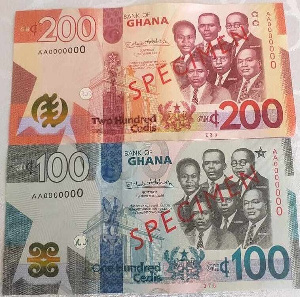The Ghana cedi has returned to the depreciation trajectory despite a strong performance in the first three-and-a-half months of this year. As of 6 May 2020, the cedi had declined in value by 1.18% to trade at GH¢5.600 to the US dollar on the interbank forex market and 2.36% to sell at GH¢5.93 on the interbank forex market.
Currency analysts believe the active support of the Bank of Ghana on a daily basis has helped slow down the deprecation of the cedi despite the gradual rebound of the global economy after some countries eased their lockdown restrictions.
US$25 million was sold on the forex forward market on Tuesday 5 May 2020.
Some sizable volumes were also sold on the spot market Wednesday, 6 May 2020.
But the BoG’s daily interventions overall, appear to be keeping the USD/GHS range-bound at the moment.
Analysts further believe the risk is tilted to the upside for the USD/GHS rate, particularly as coupon payment and dividend repatriation mounts, amidst weak export receipts.
The Treasury’s external debt service during the year is also another pressure point to watch.
Courage Martey of Databank Research, however, told Class Business: “We also think the BoG would aim to prolong the USD/GHS stay below the GHS6 psychological barrier for a while longer, especially as political risks are expected to add to the shocks in the latter part of 2020.”
As of 18 March 2020, when the coronavirus pandemic had begun causing some stir globally, the local currency had appreciated by 3.47% to the US dollar, 13.38% to the British pound and 5.81% to the euro.
It traded at GHS5.34 to one American dollar, GHS6.45 to one British pound and GH¢5.87 to the euro.
At the forex bureau, the cedi was going for GH¢5.69 to one US dollar, GH¢6.90 to one British pound and GH¢6.17 to the euro.
The cedi, however, ended the month of February 2020 with an appreciation of about 5.75% to the US dollar on the interbank market.
Source: ghanaweb.com


